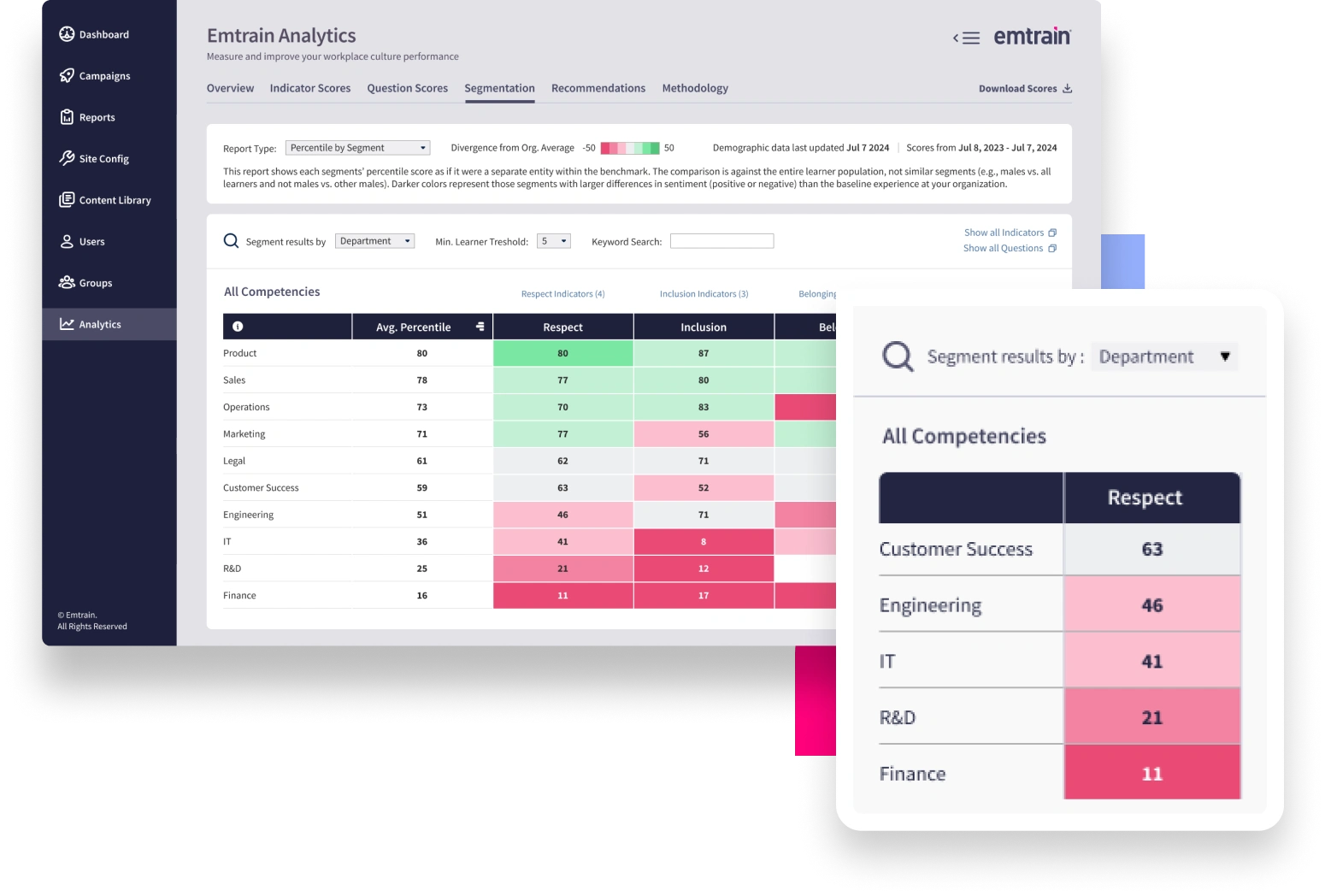Mobbing is the term commonly used internationally to describe psychological harassment or bullying in the workplace. It refers to repeated acts—verbal, emotional, or physical—that aim to isolate, intimidate, or degrade an individual. While it often involves group behavior, mobbing can also occur between individuals.
Psychological harassment usually involves a pattern of behavior that causes emotional distress, undermines a person’s dignity, and affects their ability to work. These actions may be subtle or overt, but their cumulative impact can be severe.
Mobbing and psychological harassment are prohibited in many jurisdictions. Even in countries where they are not explicitly defined by law, these behaviors violate widely accepted organizational values and standards of respectful conduct.
We can address mobbing through our policies, training programs, and behavioral expectations, fostering an environment that prioritizes inclusion, respect, and psychological safety.
Emtrain’s harassment training course is engaging, interactive, and designed to spot and reduce EEO risk.

The term mobbing gained traction in the workplace context in the 1980s, thanks to the work of Swedish psychologist Heinz Leymann, who studied the impact of repeated psychological aggression at work. Originally used in zoology to describe group behavior in animals, it evolved to capture the repeated mistreatment, exclusion, or humiliation of a person in professional environments.
In international labor and employment policy discussions, mobbing is widely recognized as a serious workplace hazard, much like harassment or discrimination. In many European, Latin American, and Asian countries, legislation explicitly defines and prohibits mobbing as part of broader workplace health and safety standards.
Recognizing mobbing in action is key to preventing its long-term impact on individuals and workplace culture.
Example 1:
An employee is routinely assigned the least desirable tasks, publicly criticized for minor mistakes, and excluded from informal team communications over time.
Example 2:
After raising a concern with leadership, a staff member begins to receive unusually negative performance reviews and is ostracized by peers who previously collaborated with them regularly.
Example 3:
A junior employee is the target of sarcastic comments, inappropriate jokes, and repeated dismissals of their input during meetings, leading them to withdraw and disengage from the team.
These patterns of behavior—when sustained over time—represent mobbing. Whether the source is one individual or a group, the effect on the target’s psychological safety and work performance can be profound.
Organizations that take a proactive approach to identifying and addressing mobbing foster healthier, more inclusive workplaces. This starts with clear policy language, cultural accountability, and leadership engagement.
Managers should be trained to identify signs of mobbing, even when they’re subtle. Employees need confidential channels to report issues, and policies must be enforced consistently and equitably.
Preparing for potential mobbing involves proactive strategies, including:
Clearly defining psychological harassment in internal policies and trainings
Ensuring all employees understand what constitutes unacceptable behavior
Conducting regular culture and engagement surveys to uncover hidden issues
Offering bystander training to empower employees to speak up
Creating confidential, accessible reporting and support systems
Training managers to respond early and effectively to concerning dynamics
Providing counseling or mental health resources for impacted individuals
Modeling respectful leadership at every level of the organization
Create a workplace culture rooted in inclusion, transparency, and respect
Set behavioral expectations and enforce them consistently
Encourage peer accountability and ongoing feedback
Take early signs of disengagement or withdrawal seriously
Ensure leadership visibility and commitment to employee well-being
Support team cohesion with conflict resolution and restorative practices
Microlesson: Bullying and Aggressive Behavior
In this microlesson, we demonstrate how a new hire is rudely questioned about his qualifications and education by an existing employee.
Course: Preventing Workplace Harassment Training — Global
This course helps employees around the world recognize and respond to all forms of workplace harassment, including mobbing and bullying.
Blog: How to Spot Workplace Bullying
Learn how to spot workplace mobbing as we identify the types of mobbing.
Blog: Harassment Policies & Training Around the Globe
A high level summary of different policies and harassment training requirements in regions around the globe
In this scenario, an employee is assigned a project but struggles to meet the timeline. Instead of receiving support, her manager publicly criticizes her performance and reassigns the project to another team member in front of the group. The new team member then reinforces the criticism by speaking negatively about her to another colleague—who spreads the sentiment further—contributing to a cycle of exclusion and isolation. This example highlights how workplace bullying, or mobbing, can escalate through passive and active behaviors across multiple individuals.